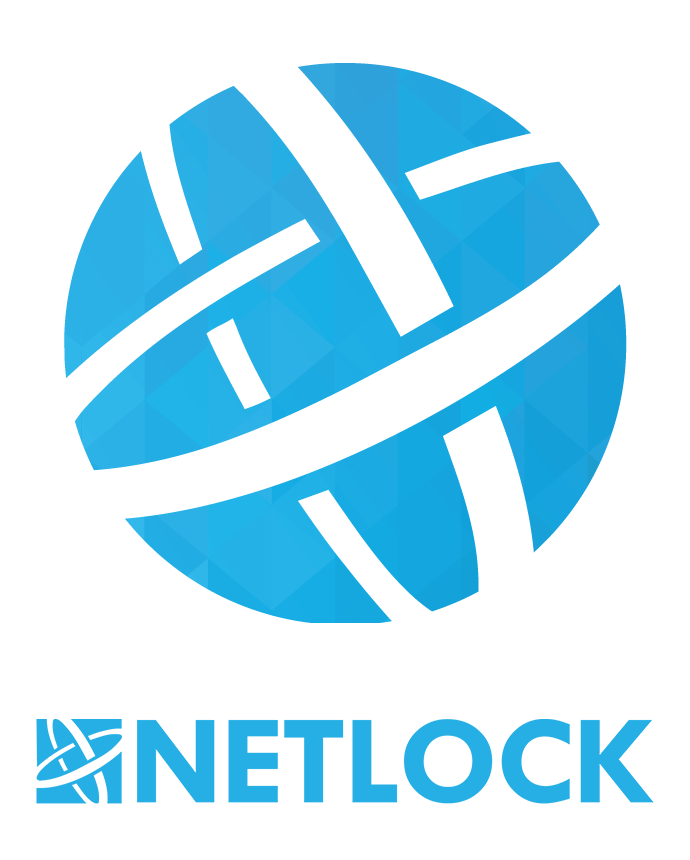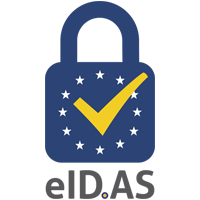E-certified (electronically signed) Hungarian translations
|
Our translation agency uses NETLOCK, the market leader in electronic document authentication, as its certified electronic signature service. Electronically signed private documents with full evidential value have the same legal effect as printed, stamped and signed documents and are accepted in all EU member states. |

|

The signature is compliant with eIDAS (Regulation (EU) No 910/2014 of the European Parliament and of the Council on electronic identification and trust services) and the Hungarian e-Administration Act (Act CCXXII of 2015 on general rules for electronic administration and trust services) and remains authentic in the long term.
1. Open the e-authenticated document in Acrobat Reader. The header tells you what to do (in the target language):

2. Click on the header. The trust service provider will confirm over the Internet that the document was valid when it was signed, that it has not been altered since, and that the source of trust is the EU (in the system language):

3. Click the 'Show Signing Certificate' button to view more information:

My device does not have AcrobatReader, what should I do?
E-certified documents can also be verified online
- with the validator of the Austrian Regulatory Authority for Broadcasting and Telecommunications
What will happen to the validation of paper translations?
We will continue to offer it; the security elements of our printed documents are described in detail on the page Security elements of our printed documents. However, the future belongs to e-documents because they are tamper-proof.
Legal background
Our translation services issue electronically signed documents certified in accordance with the EU Regulation on Electronic Identification and Trust Services for Electronic Transactions (eIDAS). According to Article 22:
(1) Each Member State shall establish, maintain and publish trusted lists, including information related to the qualified trust service providers for which it is responsible, together with information related to the qualified trust services provided by them.
As indicated on the certificate, the source of the trust is the EUTL (European Union Trusted Lists). Netlock ZRt is among the Hungarian issuers of electronic signatures published on the official EU Trust Services Dashboard website.
Article 35 Legal effects of electronic seals
3. A qualified electronic seal based on a qualified certificate issued in one Member State shall be recognised as a qualified electronic seal in all other Member States.
Article 41 Legal effect of electronic time stamps
(3) A qualified electronic seal based on a qualified certificate issued in a Member State shall be recognised as a qualified electronic seal in all Member States.
Article 52 Entry into force
This Regulation shall be binding in its entirety and directly applicable in all Member States.
On the basis of the above, our e-certified documents shall be accepted by the offices and authorities of all Member States of the European Union as if they had been translated by us.
AcrobatReader is published by Adobe in the United States (the most widely used PDF reader; the file format itself is a product of Adobe Systems). eIDAS electronically signed documents can be verified with AcrobatReader, but also online with the Digital Signature Services or with the validator of the Austrian Rundfunk und Telekom-Regulierungs-GmbH.
A brief history of digital signatures
As long as people have issued documents to secure rights or goods, there have been methods of authenticating them. Authentication is the process of ensuring that the recipient of a document can be sure that it has been issued by the authority entitled to do so.
Authentication has always been a process beyond the reach of the average person of the time. It was authenticated by wax seals, individual ink and paper. Notaries and translators still use tricolour ribbons to staple pages together, lawyers use embossed dry stamps and the old freehand signature is still in use. The most secure documents, such as banknotes, are full of security features: colour-changing, intaglio and iridescent printing, metallic threads, watermarks, Braille and microprinting.
But whatever techniques were developed by the issuers, sooner or later others learned how to counterfeit them. These techniques are now widely available and signatures can be imitated. This is why electronic signatures have been developed for the Information Society era.
E-authenticated documents
The authenticity of electronically signed or authenticated documents can be verified using computer tools connected to the Internet. Unlike any previous form of authentication, this also proves that the signatory has produced the document with the same legible content as before, without any pixel changes. By clicking on the signature field in such PDFs (typically in the header), an independent signature provider confirms who (which organisation) created the document and when.
In the age of e-documents, another problem is a thing of the past. In principle, the institution of the return receipt was developed as a means of proving the receipt of postal items. The postman would sign the receipt with the recipient at the delivery point and then hand over a sealed envelope. But what did this receipt prove? Just the fact of receipt. It did not show what exactly was in the envelope (without questioning the infallibility of the signatures scribbled on the door). In the past, therefore, the sender and addressee could, in principle, claim everything about the contents of the document - or even the envelope.
The digitisation of official documents also offers a solution to this problem. As mentioned above, the authentication service provider reports back the identity of the sender, the time of issuance and that the document was issued with the exact contents. This makes the content undeniable to both sender and recipient. The undeniability of delivery is increasingly being ensured, or at least attempted, by public authorities through portals such as the Hungarian customer portal ("ügyfélkapu"), the business portal ("cégkapu") - in that documents sent there are deemed to have been delivered by law.

